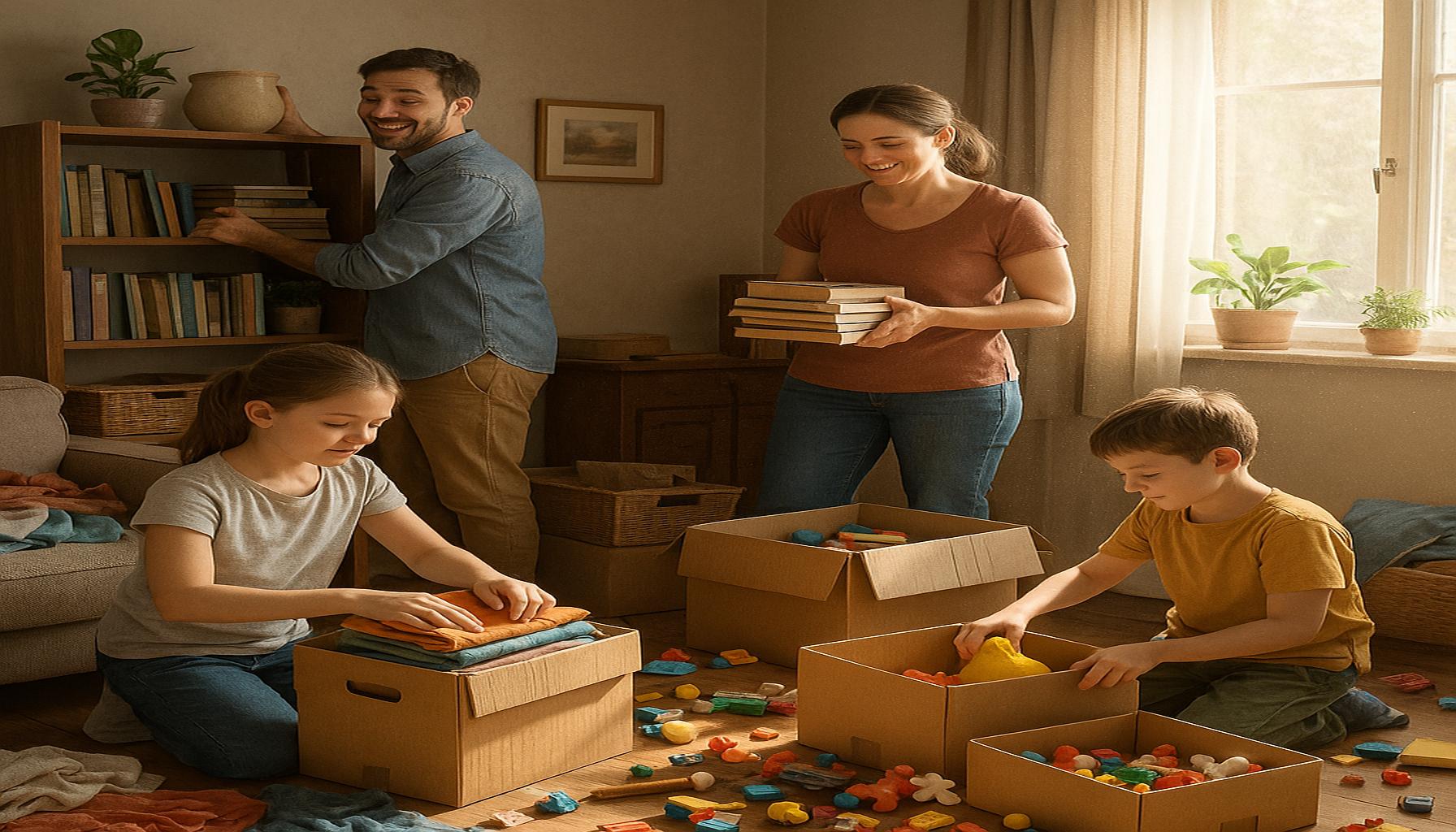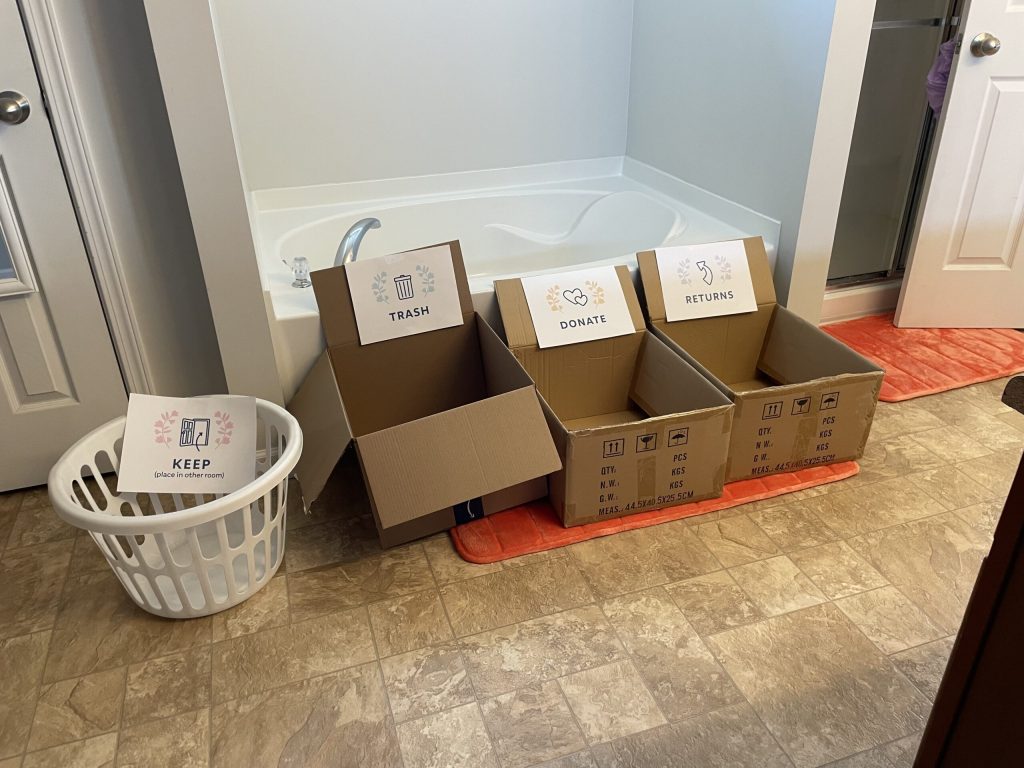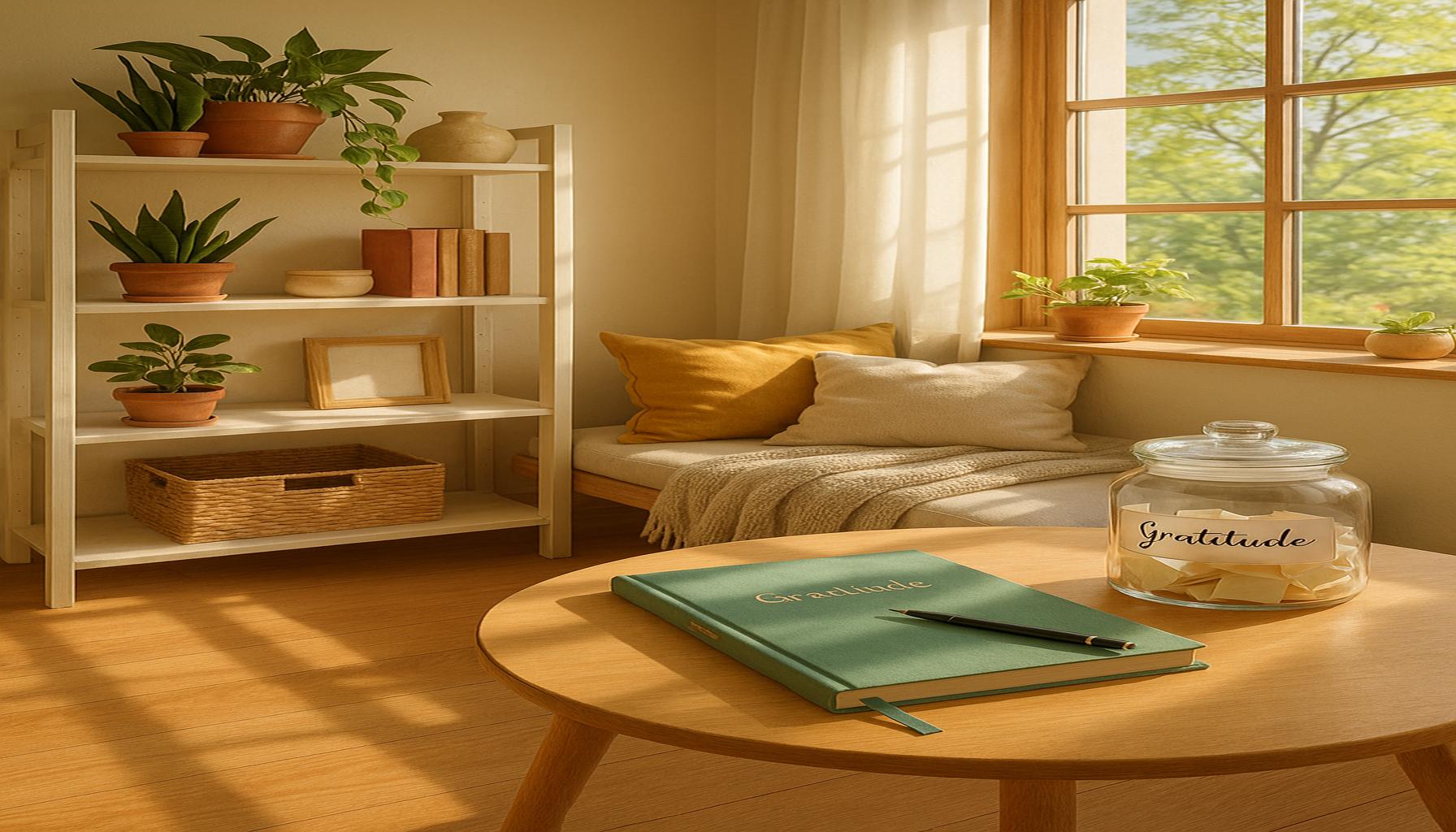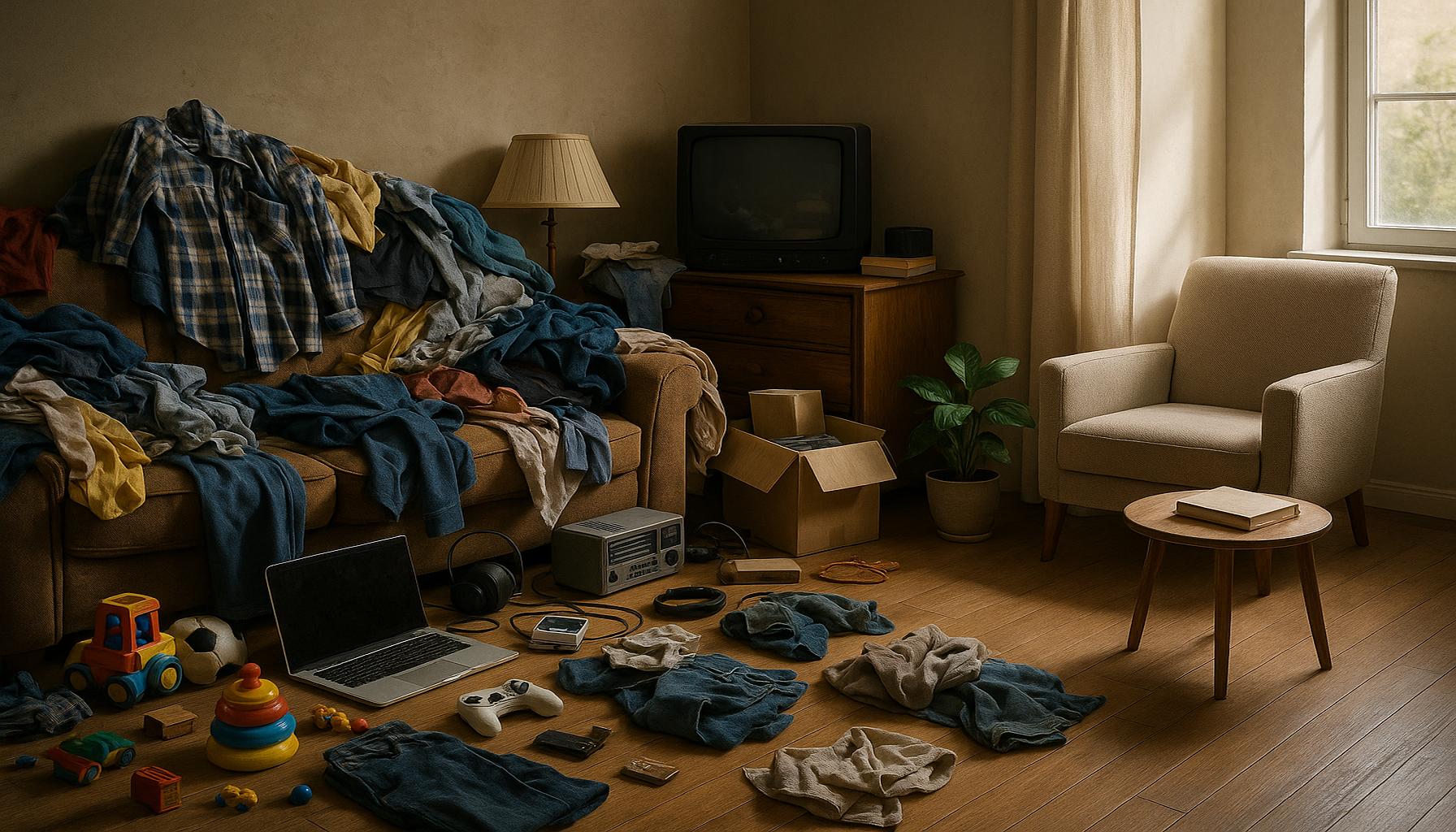Decluttering with Family: Practical Tips to Involve Everyone in Home Organization

The Importance of Decluttering as a Family
In our modern lifestyles, it’s all too easy for homes to become overwhelmed with items—be it toys, clothes, or tech gadgets. This clutter can create a sense of chaos and even affect mental well-being. By involving the entire family in decluttering efforts, you can not only tackle it collectively but also turn it into an enriching experience that fosters cooperation and strengthens family ties.
Unpacking the Benefits of Teamwork
When families come together for a common goal, it helps build a sense of unity. Teamwork fosters connection as every member communicates their thoughts and preferences about the items they own. This collaboration encourages openness and understanding; for instance, parents can listen to their children’s sentiments about certain toys, leading to meaningful conversations about memories attached to them.
Moreover, assigning individual responsibilities can significantly enhance the decluttering process. For example, you might assign younger kids to sort through their toys while older children tackle their closets. This approach not only teaches kids about organization but also instills a sense of ownership over their personal spaces. This engagement can lead to self-management skills that benefit them in various aspects of life.
Life Skills Learned Through Decluttering
Decluttering is not just about creating a more organized space; it is also an opportunity to teach valuable life skills. Children learn decision-making skills by evaluating which items they want to keep or donate. Additionally, as they sort through their belongings, they may develop empathy for their items, considering how others could benefit from their discarded toys or clothes. These lessons extend beyond the home and can influence their attitudes toward material possessions in the long run.
Creating a Strategy for Success
To ensure that decluttering is productive and enjoyable, establishing a clear plan is crucial. Open communication is vital for setting family goals and keeping everyone focused on the task at hand. Establish a timeline and consider designating specific decluttering days, which can help in managing the workload and expectations.

Proven Tips to Make Decluttering Engaging
- Set a schedule: By allocating specific dates for decluttering sessions, everyone knows when to prepare, allowing anticipation to build.
- Make it fun: Incorporating music or gamifying the process can transform an arduous task into an enjoyable event. Consider setting a timer and challenging family members to see who can purge the most items in a given timeframe.
- Celebrate achievements: Recognizing progress, even in small increments, can significantly boost morale. Celebrate with small rewards, like a family movie night or a favorite treat once the decluttering day wraps up.
The Rewarding Journey
In conclusion, getting your family involved in decluttering not only enhances your living space but also cultivates invaluable life lessons. Through teamwork and shared experiences, the process becomes not just a means to an end but a bonding journey that leads to a more harmonious home. Dive into this adventure and discover together how a clean space can nurture a happier, well-organized life!
DISCOVER MORE: Click here to unlock the benefits of decluttering
Effective Pre-Decluttering Conversations
Before embarking on the decluttering journey, it’s essential to have pre-decluttering conversations with your family. Engaging in open discussions about the significance of decluttering can set a positive tone and ensure that everyone is on the same page. You may begin by explaining how a clutter-free environment can lead to improved focus and reduced stress levels. When children understand the benefits, they are more likely to participate actively and enthusiastically.
Make it a family affair by holding a meeting where everyone can express their thoughts on their belongings and the clutter issue at hand. Ask questions like, “What items do you feel we have too much of?” or “What do you think could be donated to those in need?” This collaborative approach empowers family members to voice their perspectives while facilitating mutual understanding. It can also lead to unwanted items being viewed through a different lens; an old toy may hold value for one person but be classified as clutter by another.
Setting Shared Decluttering Goals
Once everyone is invested, setting collective goals will keep the decluttering process organized and focused. Discuss what your family envisions for the final outcome. Do you want to create a more open living space? Are you looking to streamline your kids’ playroom? By establishing these shared decluttering goals, everyone is working towards a common vision. Research shows that families who set joint objectives are more likely to stay committed to achieving them.
Creating a Decluttering Action Plan
To turn your aspirations into reality, develop a detailed action plan. Here are a few elements to consider:
- Designate areas: Identify specific rooms or zones in your home that require decluttering. Breaking it down into smaller tasks prevents overwhelm.
- Assign tasks: Based on age and capability, assign each family member specific responsibilities. This may mean that a younger child sorts through toys, while a teenager takes care of their clothes.
- Utilize a timeframe: Setting time limits helps maintain motivation. For instance, plan to spend 30-45 minutes on each area before taking a break.
- Scheduled check-ins: Regularly review progress as a family. This encourages everyone and ensures that no one lags behind.
Equipping Your Family with Helpful Tools
Having the right tools can streamline the decluttering process. Invest in storage bins, garbage bags, and sorting containers. Clearly labeled boxes can simplify the decision-making of whether to keep, donate, or discard items. If possible, consider going digital: utilizing apps designed to help with home organization can assist family members in tracking their progress and managing their belongings more effectively.
By establishing open lines of communication, setting shared goals, and creating an actionable plan, your family not only can transform your home but will also strengthen familial bonds through this collaborative effort. Engaging in these preparatory steps lays the groundwork for a fulfilling decluttering experience that benefits everyone involved.
Involving the Whole Family in Decluttering
When it comes to decluttering your home, the involvement of every family member is crucial for long-term success. Encouraging participation not only lightens your workload but also fosters a sense of responsibility and ownership among all members. Here are some practical tips to effectively include everyone in the journey toward a more organized living space:
1. Set Clear Goals Together
Before diving into decluttering, gather the family to discuss your organizing objectives. Make it a collaborative decision. Discuss what areas need attention and set achievable goals, such as decluttering one room per week or dedicating one weekend a month to family organizing days. This creates a sense of unity and shared purpose.
2. Assign Age-Appropriate Tasks
Consider the ages and capabilities of your children when assigning tasks. Younger kids can handle sorting toys, while teenagers might tackle their own rooms or shared spaces. By delegating tasks that align with their abilities, everyone feels valued and contributes meaningfully to the process.
3. Create a Decluttering Schedule
Establish a decluttering routine that accommodates the different schedules of family members. Make it fun by turning it into a game where everyone can earn “points” for completing their tasks or finding items to donate. With an organized schedule, you’ll have designated times set aside to focus on decluttering, ensuring each family member is on board.
4. Make it Social
Incorporate social elements into your decluttering strategy. Invite friends or neighbors to join in on your decluttering days for an added layer of motivation. Share tips, tricks, and even snacks during breaks to foster a community atmosphere.
5. Celebrate Progress
Recognize and celebrate the milestones you achieve together. Whether that means a small family gathering to admire your work or a special treat, celebrating progress helps maintain enthusiasm and commitment to keeping a tidy home. Remember, decluttering isn’t just a chore; it’s a family bonding experience that cultivates a positive environment.By addressing decluttering as a family affair, you build collaboration and communication skills while transforming your home into a sanctuary of organization. Next, we will explore the emotional impacts of decluttering and how it can lead to a more peaceful family life.
DIVE DEEPER: Click here to simplify your digital life
Fostering an Engaging Decluttering Environment
Creating an enjoyable atmosphere during the decluttering process can significantly impact participation levels within the family. One effective strategy is to incorporate fun elements and incentives that motivate everyone to get involved. For instance, consider turning the decluttering sessions into friendly competitions. You can set a timer and see who can sort their assigned area the fastest. Offer small rewards, such as a favorite treat or extra screen time, for achievements during these activities, which can transform tedious tasks into exciting challenges.
In addition, tailor the decluttering experience to suit all age groups. For young children, create a game that involves sorting items into “keep”, “donate”, and “discard” categories. Use colorful stickers or stamps to mark success as they go along. Older children or teens may appreciate the autonomy of choosing how to manage their own spaces, giving them the freedom to curate their collections while aligning with the family’s decluttering goals.
Leveraging Technology for Decluttering
In today’s digital age, technology can be a powerful ally in the decluttering process. Utilize mobile apps designed to assist with home organization. Apps like “Decluttr” can help families track their belongings and manage what should stay or go. Others, such as “Sortly,” allow users to create a visual inventory of their possessions, offering a clear view of what they own. This also makes it easier to share and collaborate as a family on decisions, especially with today’s tech-savvy children.
Moreover, consider using video calls or shared online platforms if family members are at different locations. Create a virtual decluttering session where everyone goes through items together, providing support, encouragement, and accountability from afar. This can be particularly helpful for families with older children who may be living away for college or work.
Celebrating Progress and Achievements
As your family progresses through the decluttering process, it is crucial to celebrate milestones, no matter how small. For instance, once a room is decluttered and organized, consider hosting a family movie night in that space to enjoy the fruits of your labor. This not only reinforces positive feelings associated with the decluttering effort but also cultivates a sense of accomplishment within the family.
Moreover, consider creating a family vision board for your newly decluttered spaces. Include photos, inspirations, or even reminders of the benefits of having a minimalist environment. Display it prominently in your home to continuously motivate everyone to maintain order and organization. This keeps the spirit of decluttering alive, encouraging family members to continuously evaluate their belongings and ensure they contribute to a shared space that feels comfortable and inviting.
Establishing Ongoing Decluttering Routines
Securing a long-term commitment to a clutter-free life involves cultivating ongoing decluttering routines. Establish regular intervals for family decluttering sessions—these could take place monthly or seasonally. Setting up such routines not only helps maintain the organization but also serves as an excellent opportunity for family bonding and making cherished memories together.
Teach family members to abide by the “one in, one out” rule. This principle, which encourages removing one item for every new item brought into the home, is a practical way to keep clutter in check. By promoting this philosophy, you’ll instill lifelong habits of mindfulness and appreciation of space among the family, especially in children.
Ultimately, fostering a family-oriented decluttering culture engages everyone and maximizes efficiency while contributing to a serene household environment. By incorporating these strategies, families can ensure that the decluttering experience is not only productive but also enjoyable and sustainable.
DISCOVER MORE: Click here to uncover effective decluttering strategies
Conclusion: Embracing the Decluttering Journey Together
Involving the entire family in the decluttering process not only enhances home organization but also strengthens family bonds. By leveraging engaging strategies, such as turning tasks into games and celebrating achievements, you create a collaborative and enjoyable atmosphere that motivates participation from all ages. Incorporating technology, with tools and apps designed to assist in home organization, can further streamline the process, ensuring that everyone stays connected and accountable, even from a distance.
Moreover, establishing ongoing decluttering routines instills lasting habits that encourage mindfulness and appreciation of one’s surroundings. By implementing the “one in, one out” rule, family members learn to be conscientious about their belongings, reducing clutter in the long run. This approach not only cultivates a peaceful living environment but also fosters responsibility and teamwork among everyone involved.
As families engage in this decluttering journey, they not only create a serene home but also make cherished memories together. Remember to celebrate milestones and create visual reminders of your efforts, keeping the decluttering spirit alive within your household. Ultimately, these lessons in organization extend far beyond possessions, teaching family members the value of collaboration, responsibility, and creating a space that truly feels like home. Together, families can transform their living spaces into organized havens, fostering an atmosphere that nurtures both tranquility and connection.


